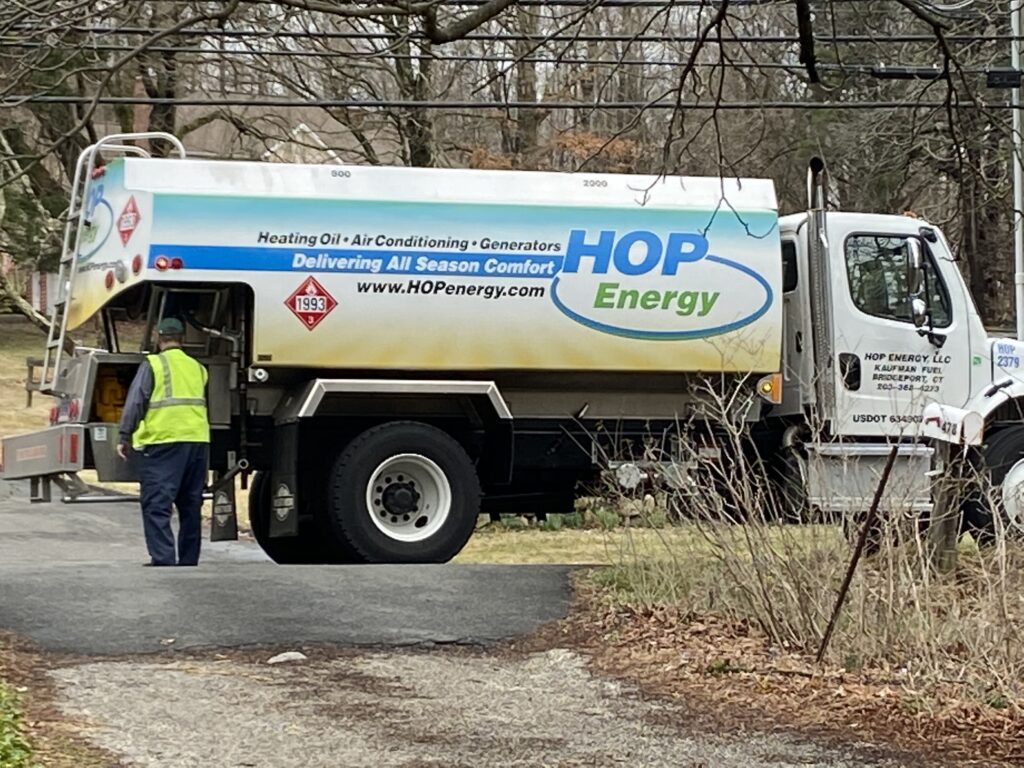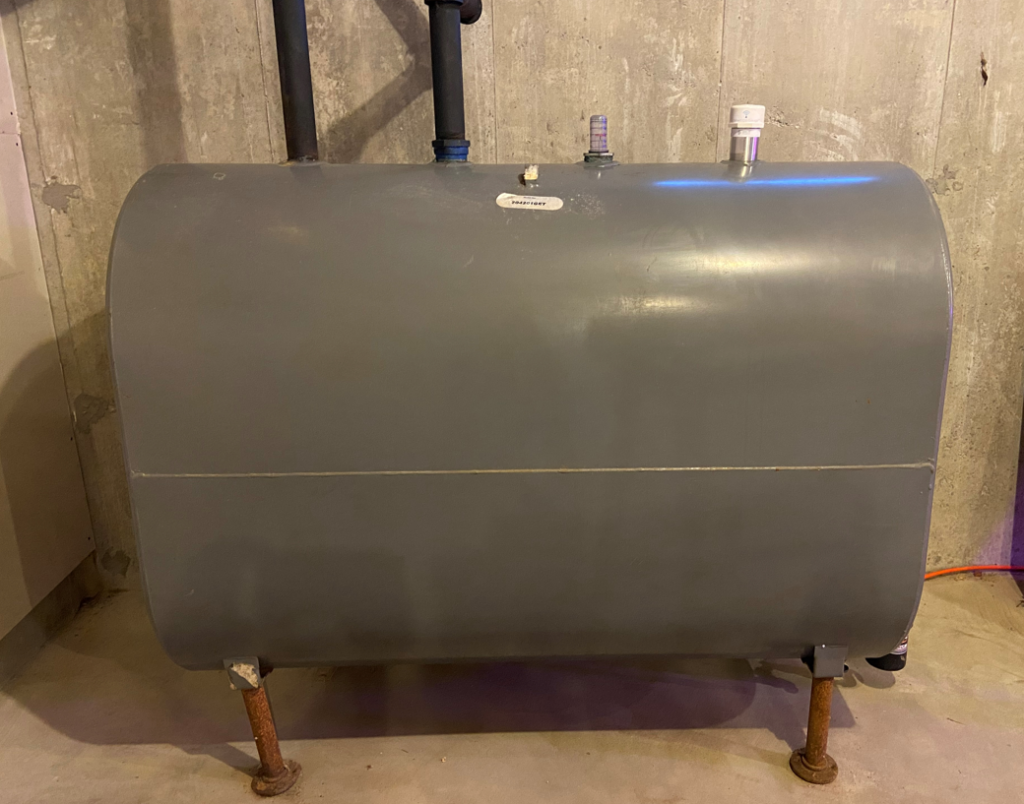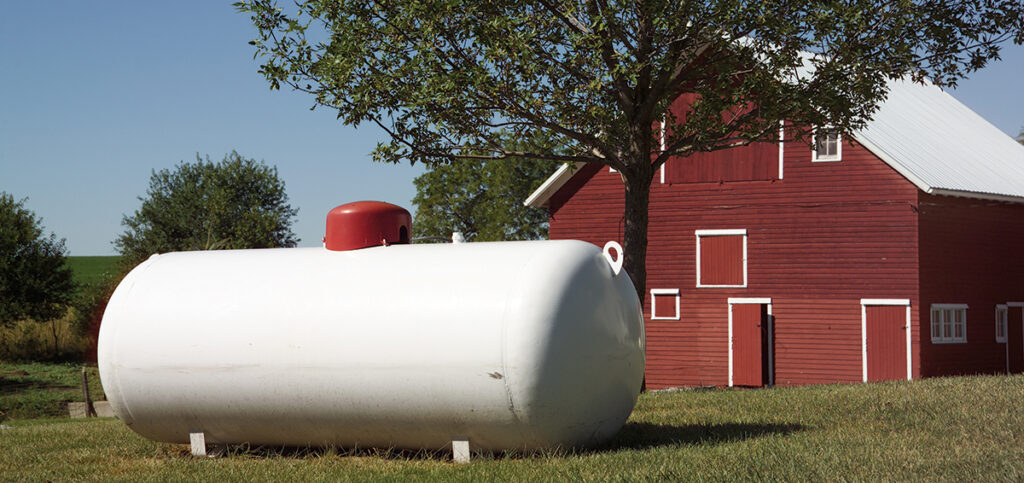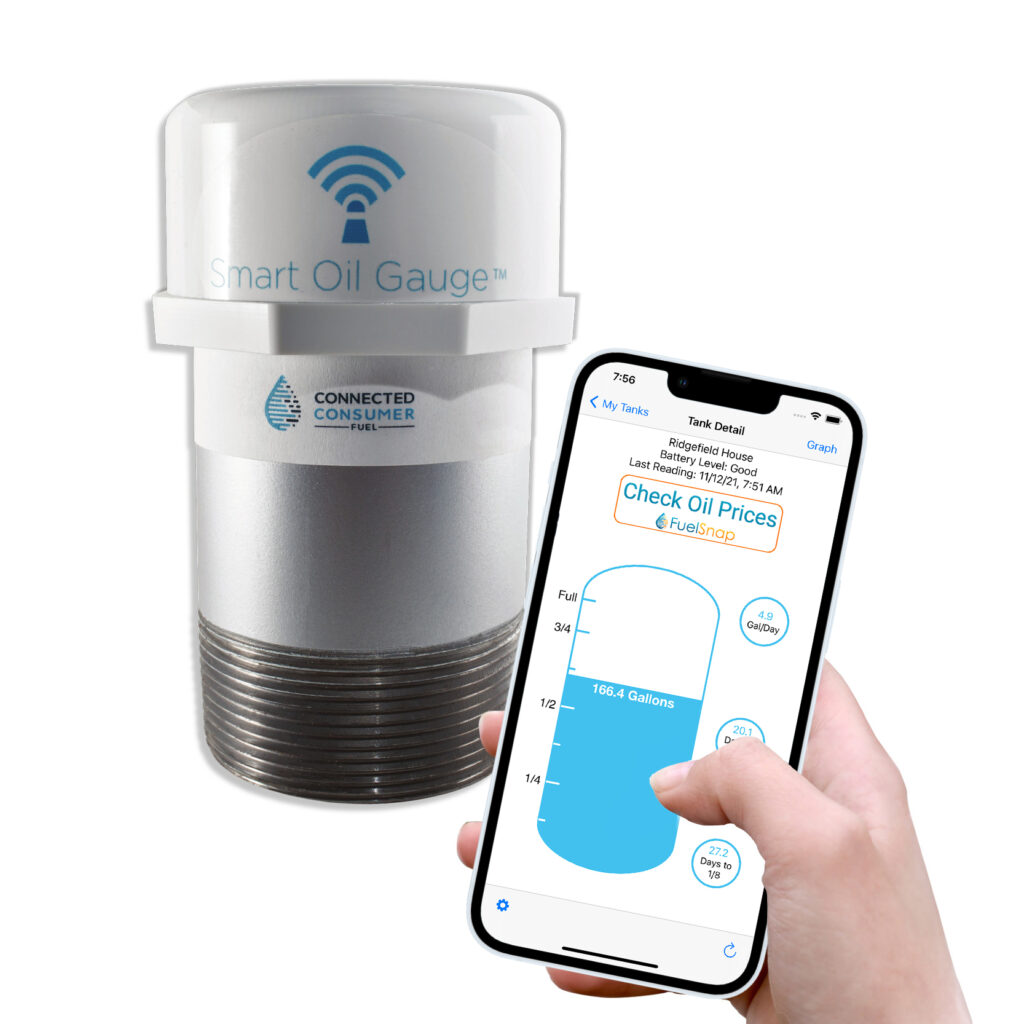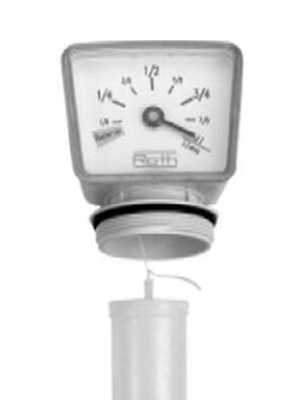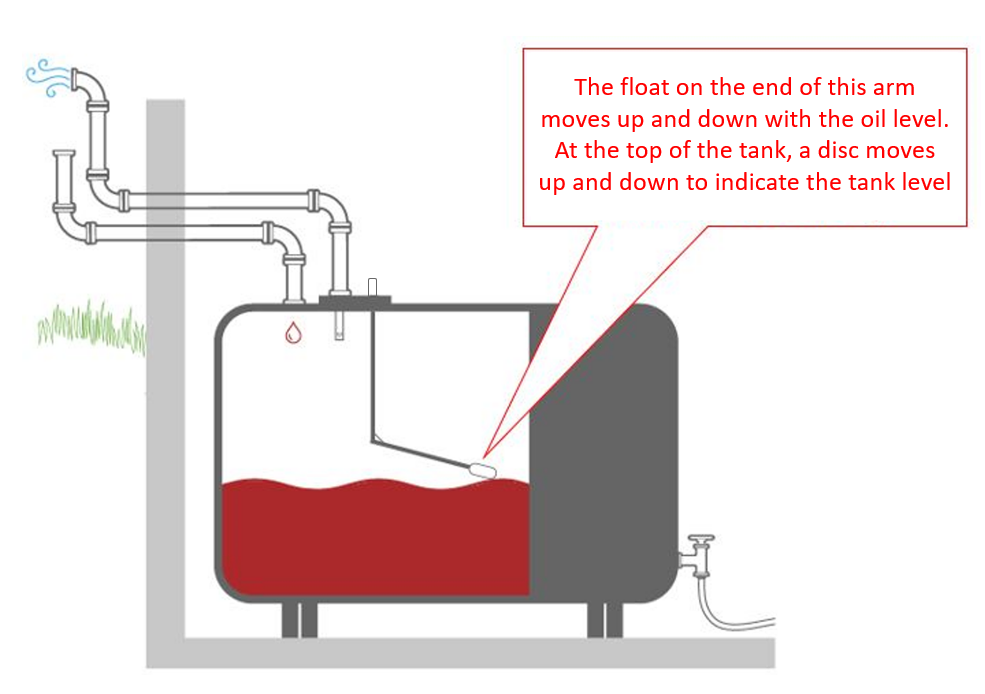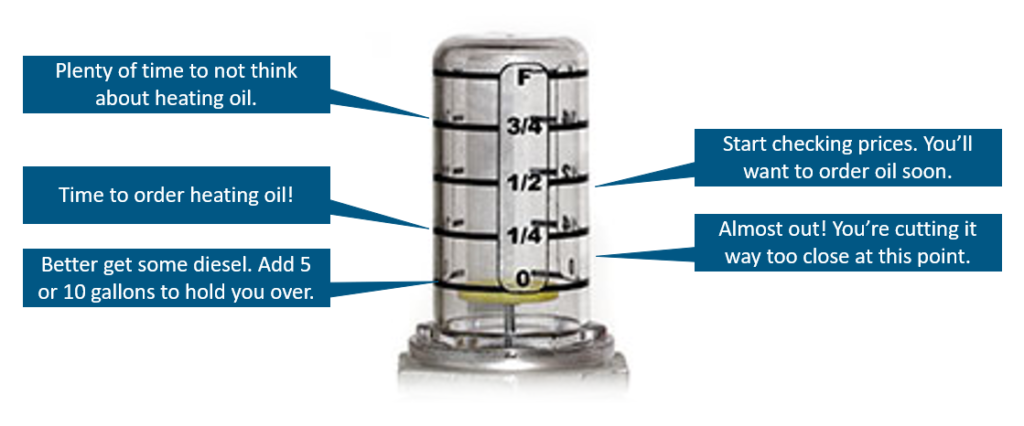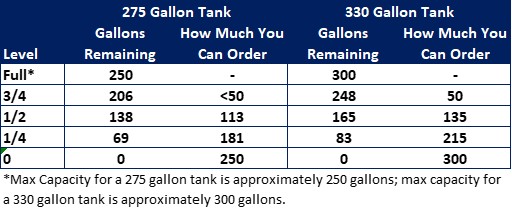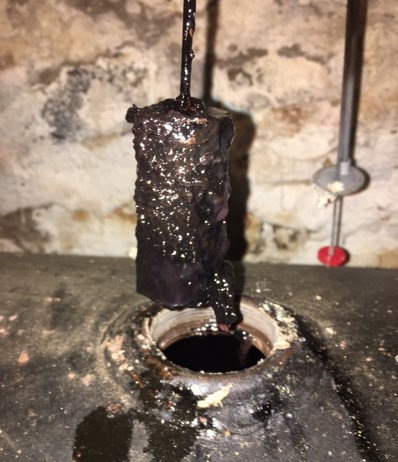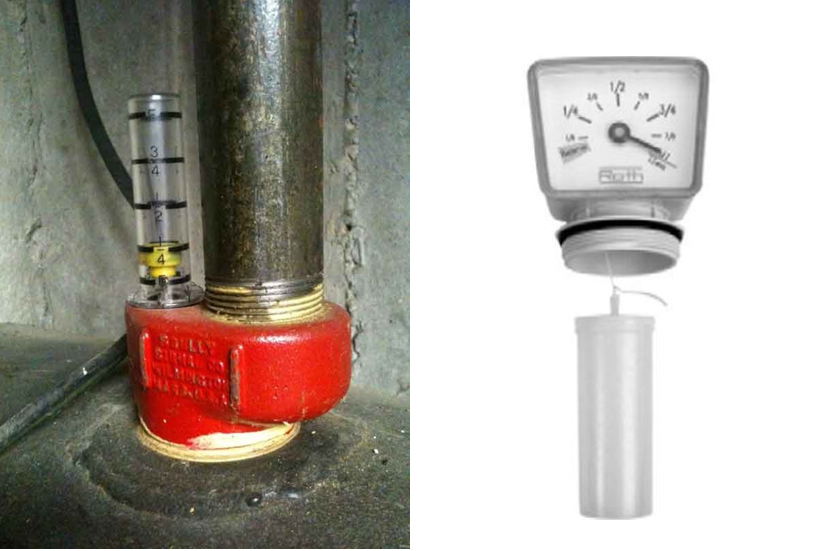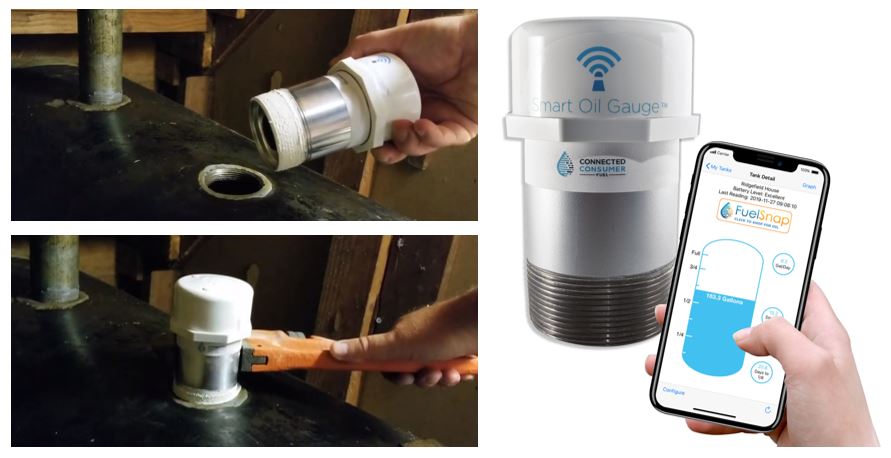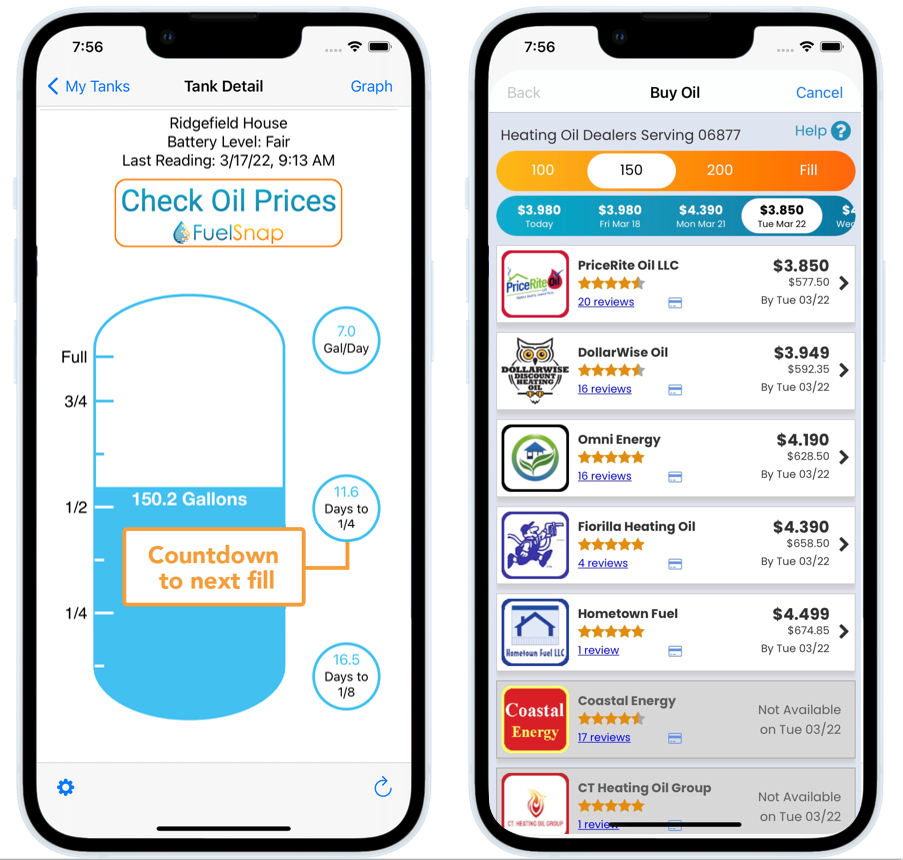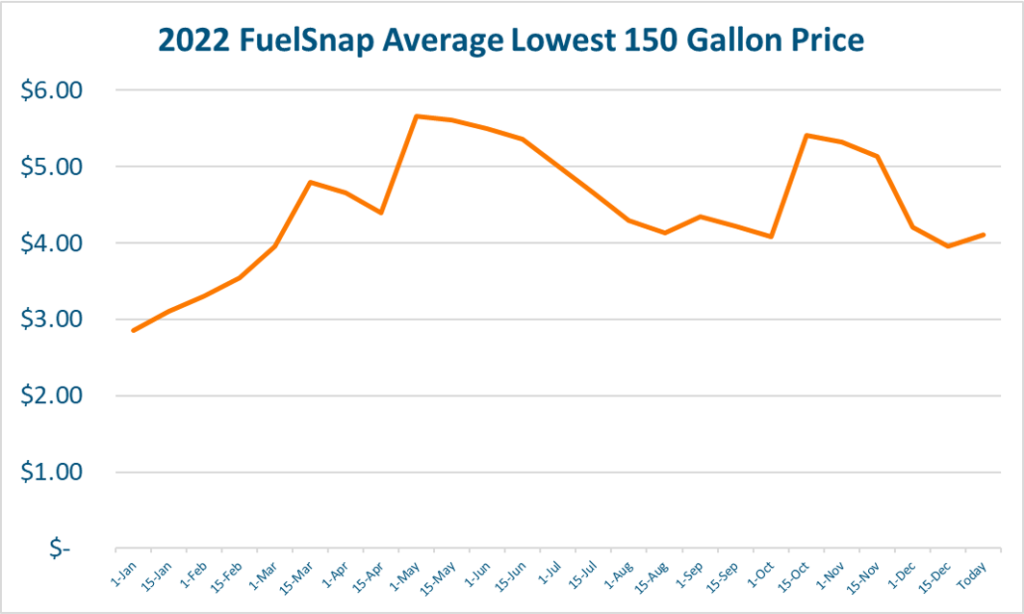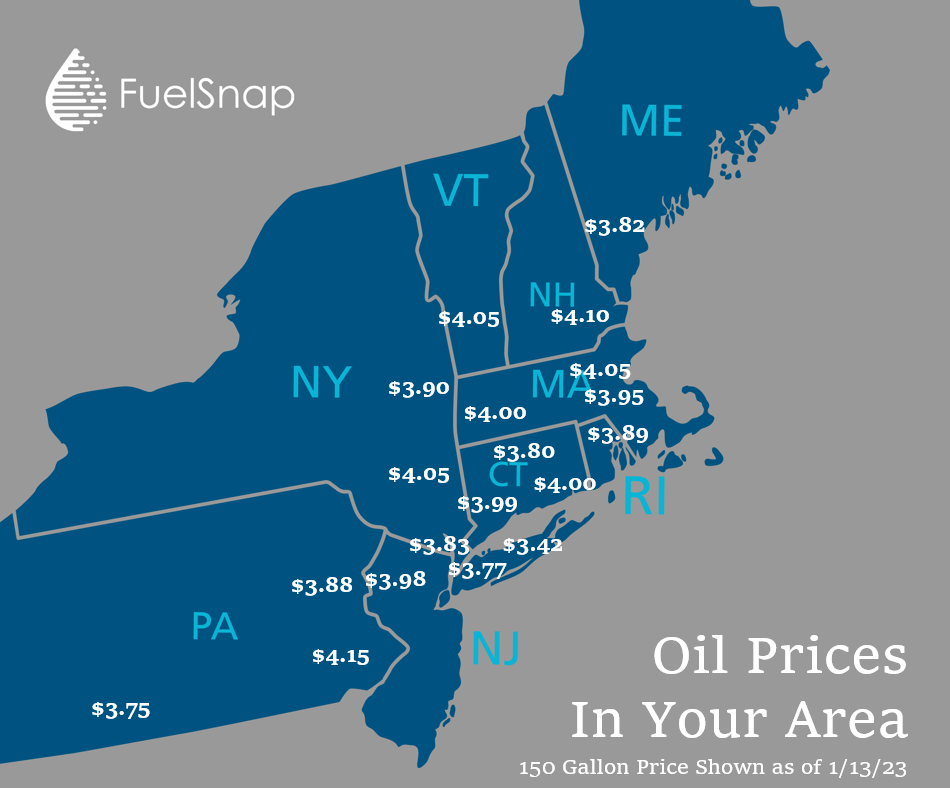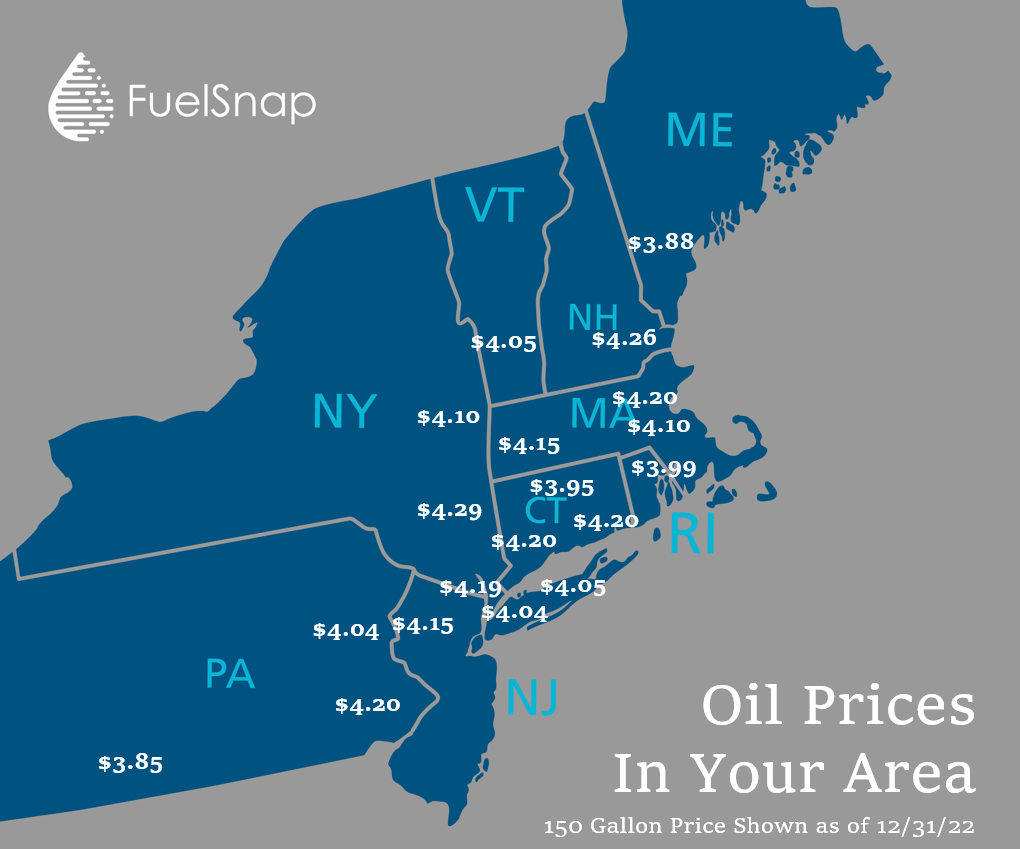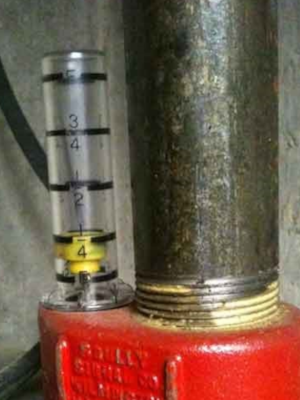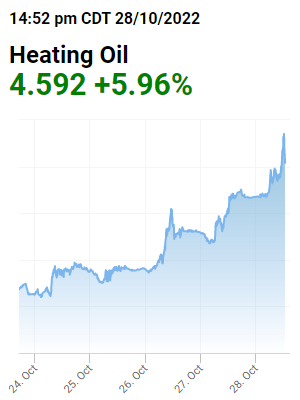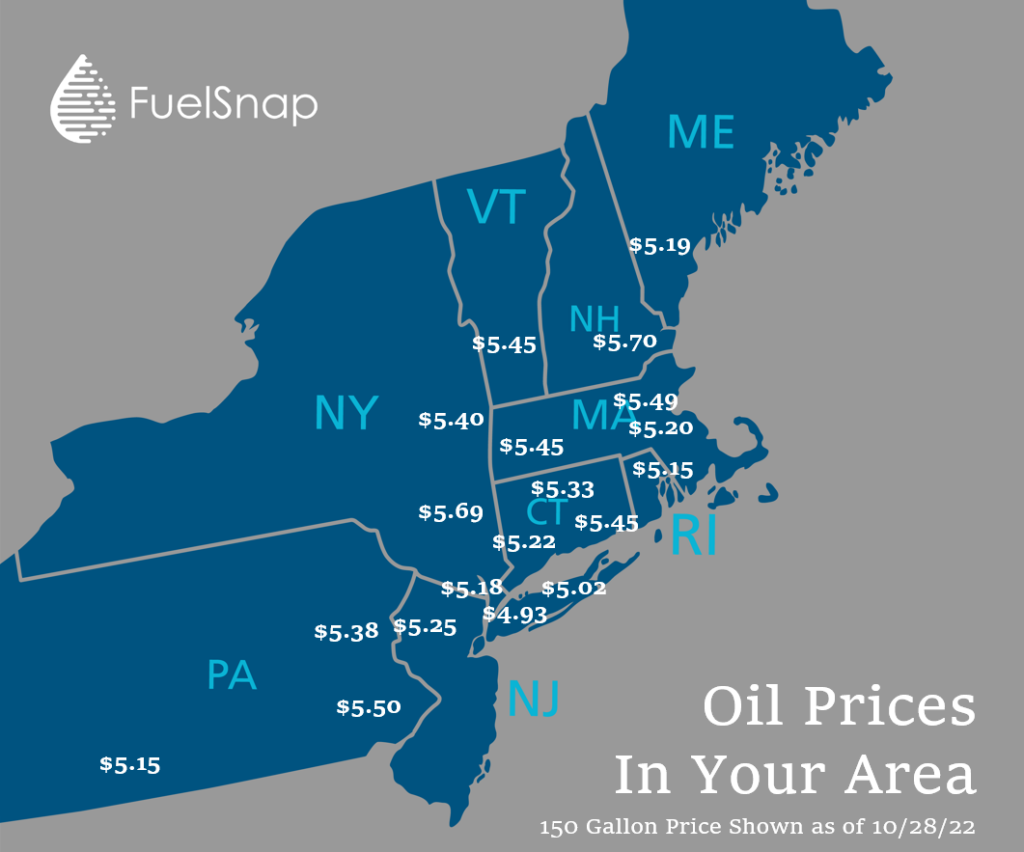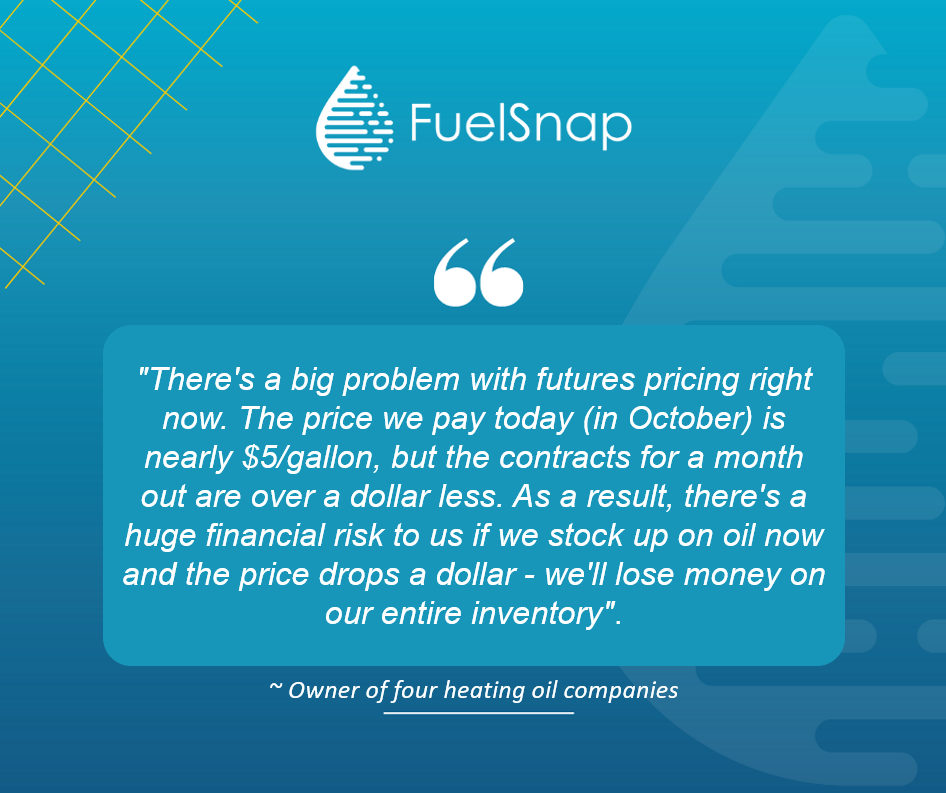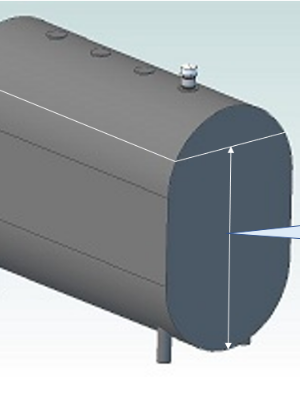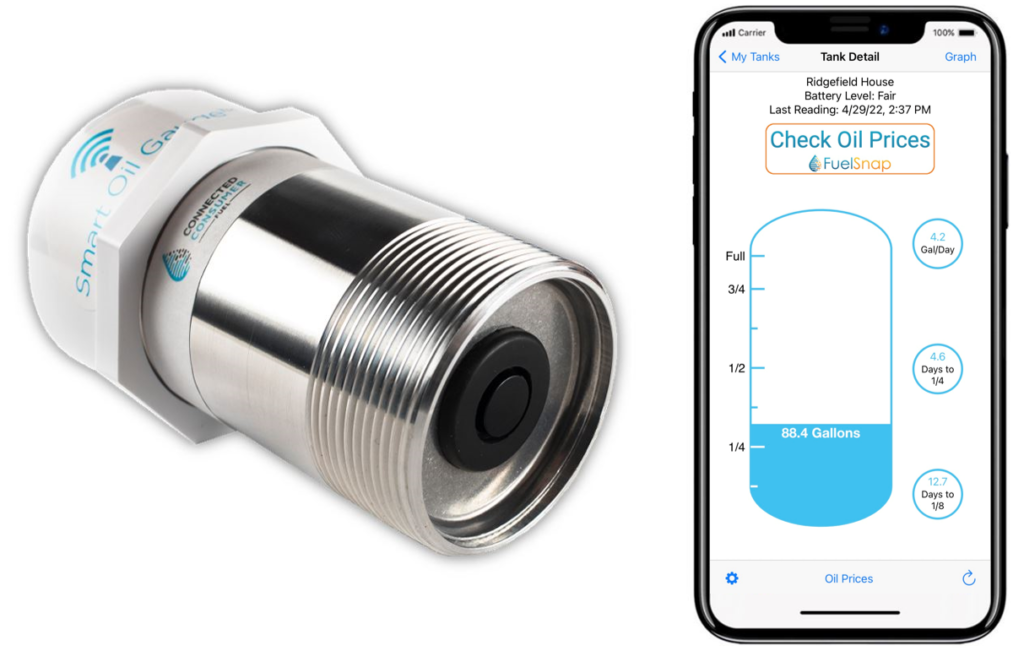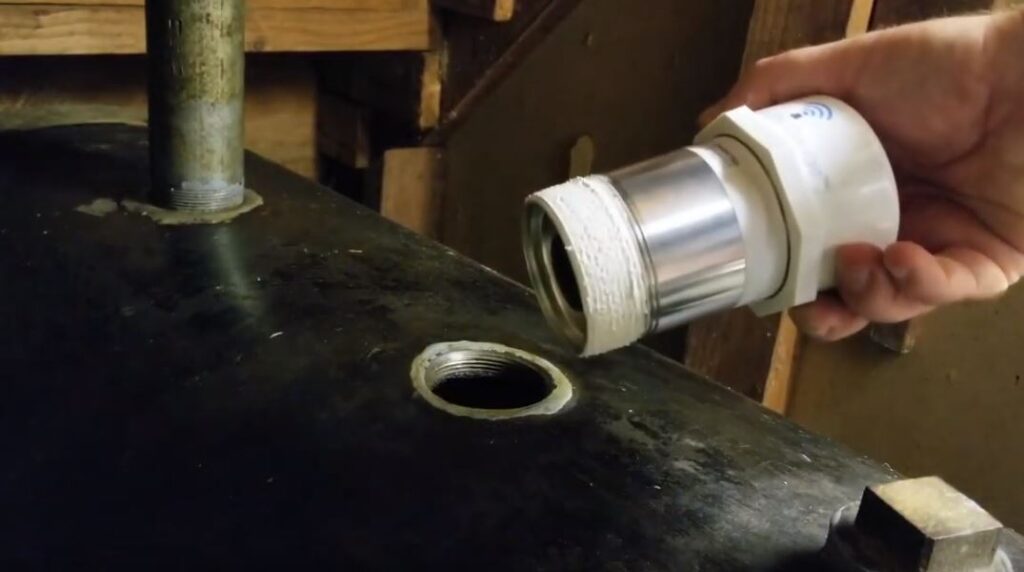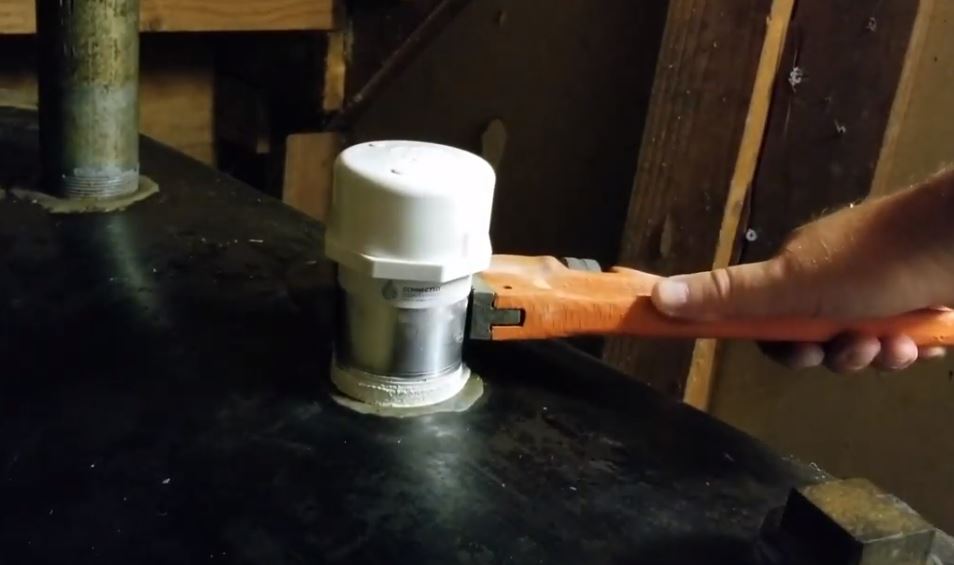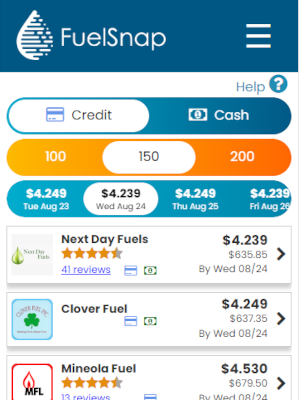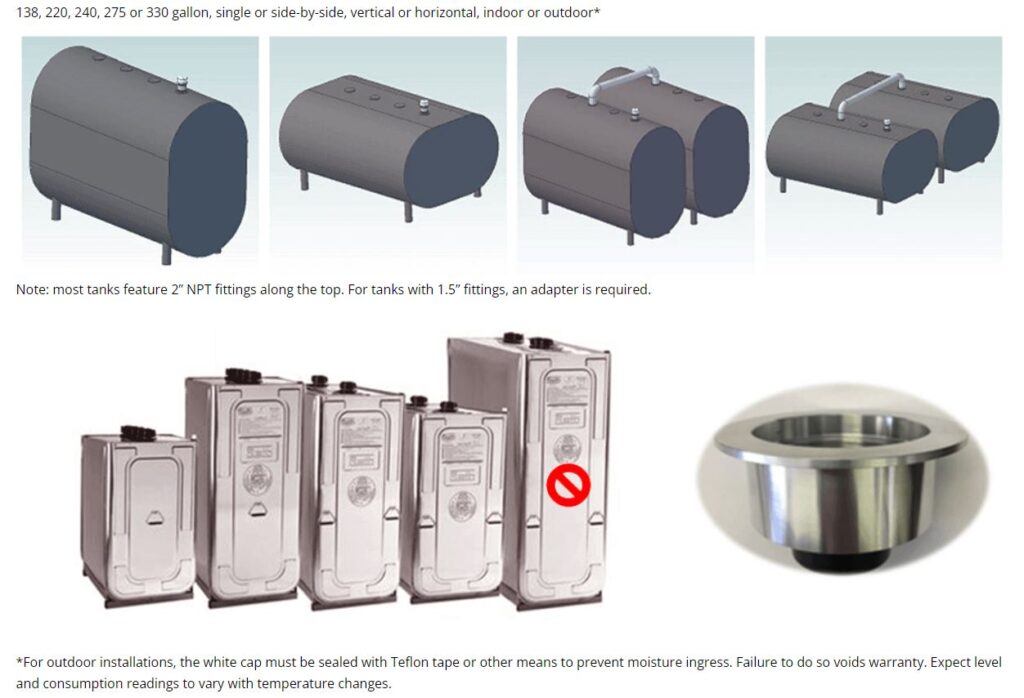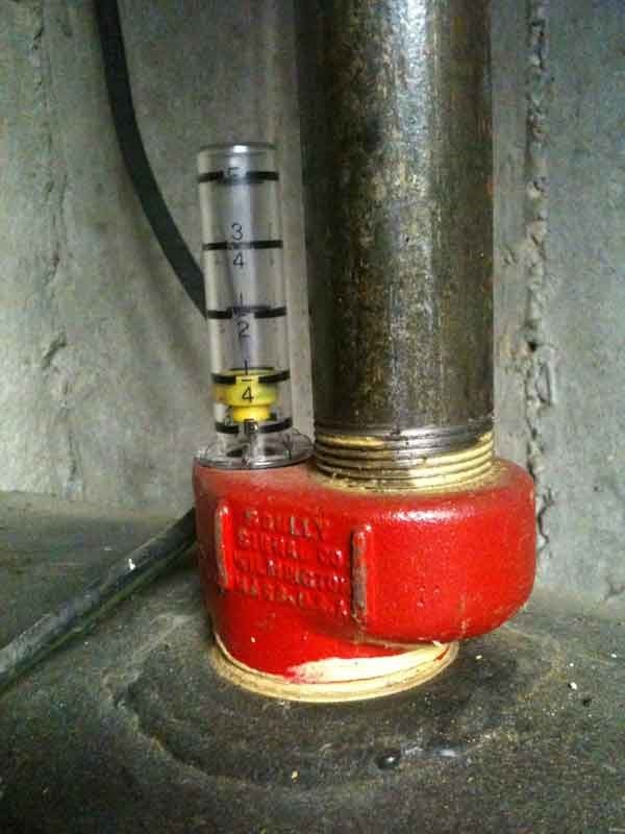If you’ve got an oil-heated home, or are thinking about buying one, you may be wondering how long a tank of oil lasts. The answer requires us to know a lot about your house and climate, all of which we’ll break down below!
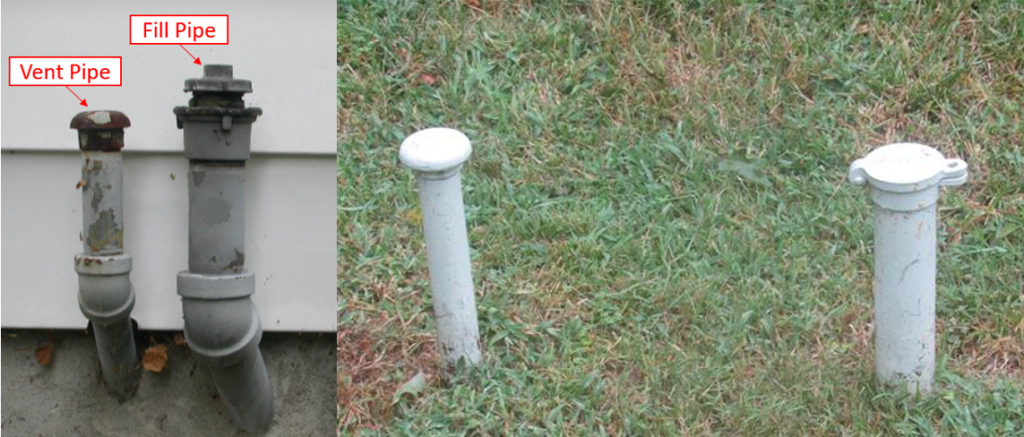
House Size
House size is one of the biggest factors to consider. The larger the house, the more air to heat. Also, the more surface area for heat loss. When there are lots of windows, there’s a lot of potential for heat to escape.
The shape and layout of the house can affect heat loss as well. A ranch house has more exterior surface area per square foot than a two-story home. As a result, more oil is generally required for ranch homes than two-story homes. Another way to think about this is wearing mittens vs. gloves. If you’ve ever gone skiing in 0 degree weather, you’ll know what I’m talking about. Your fingers stay much warmer if they’re pressed up against each other in a mitten rather than exposed on their own in a glove.

Energy Efficiency
Older houses that have single pane windows or lack insulation will burn significantly more oil than new homes with high-quality windows. If your house lacks insulation, we would recommend a home energy audit. These are often subsidized by your state and provide incentives for blown-in insulation.

Oil-Fired Hot Water Heaters
Another factor to consider is what the oil is used for. Many homes with oil heat use the same tank of oil to fire their hot water heaters. If this is the case, you should expect to use 0.5 to 1.0 gallons per day to run your hot water heater.

Outdoor Temperature
This may seem obvious: the colder it is outside, the more oil will be required. As a result, the further north into New England you live, the more oil you can expect to use.
On a typical winter day where the average temperature is 30 degrees, you can expect a 2,500 square foot house to burn approximately 5 gallons.
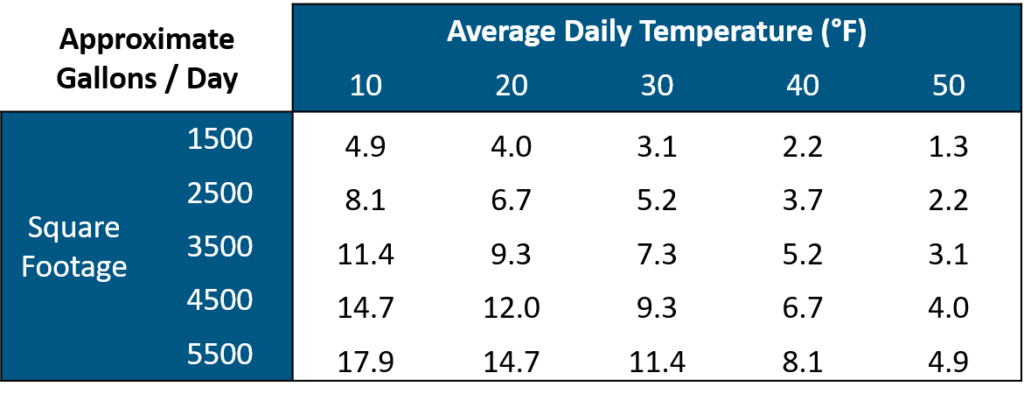
How Much Oil Is Used in a Year?
Putting all these factors together, we can show you how much oil you may use in a year.
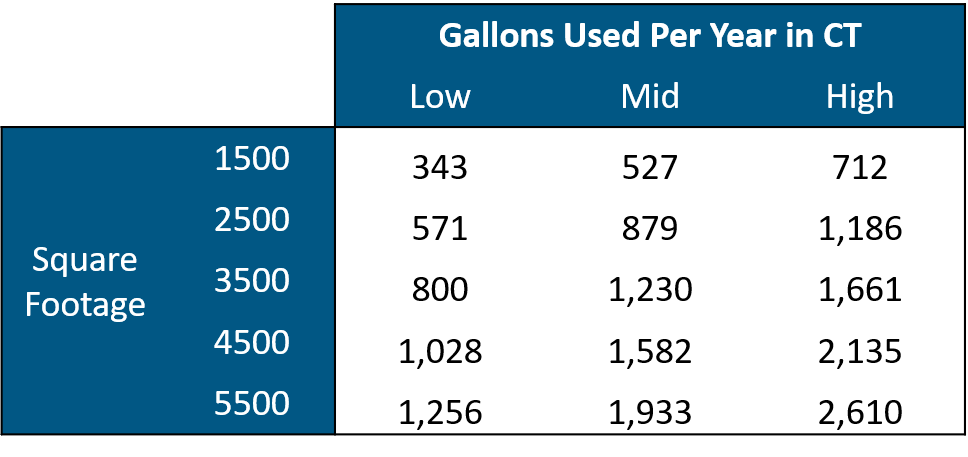
Tank Size Matters
To figure out how long a tank lasts, you’ll need to know how big your tank is. The most common tank size is 275 gallons. A 275 gallon tank holds about 250 gallons when full. This is because an air space at the top of the tank is maintained to prevent an over fill.
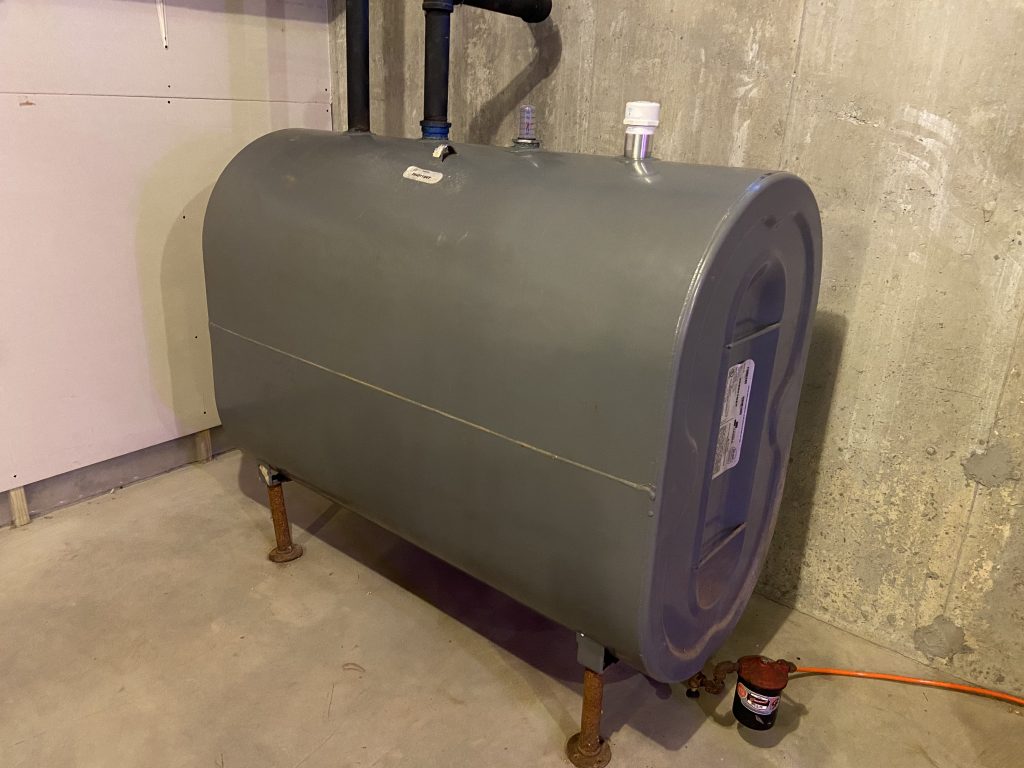
That said, you should refill your tank when it gets down to about 1/4 full. This will help prevent a runout in the event it takes a while for the truck to arrive. Therefore, the usable range of the tank will be 70 to 250 gallons, for a total of 180 gallons.
At 5 gallons a day, you can expect a 275 gallon tank to last about 36 days, or just over a month.


Other Factors
There are other factors to consider as well, such as whether the house will be occupied all winter. If your house is set to 60 degrees, the tank of oil will last quite a bit longer than if it is set to 70.
The age and condition of your boiler or furnace matter too. A newer system will be much more energy-efficient than a 20 year old system. Consider upgrading to a newer system if yours is this old.
The best thing you can do if you have an oil-heated home is install a Smart Oil Gauge to tell you how much oil is in the tank. Get alerted when the tank is low, and order heating oil online in seconds on a site like FuelSnap. You’ll save lots of money in the long run and never have to worry about checking the tank.
Happy heating,
Steve



